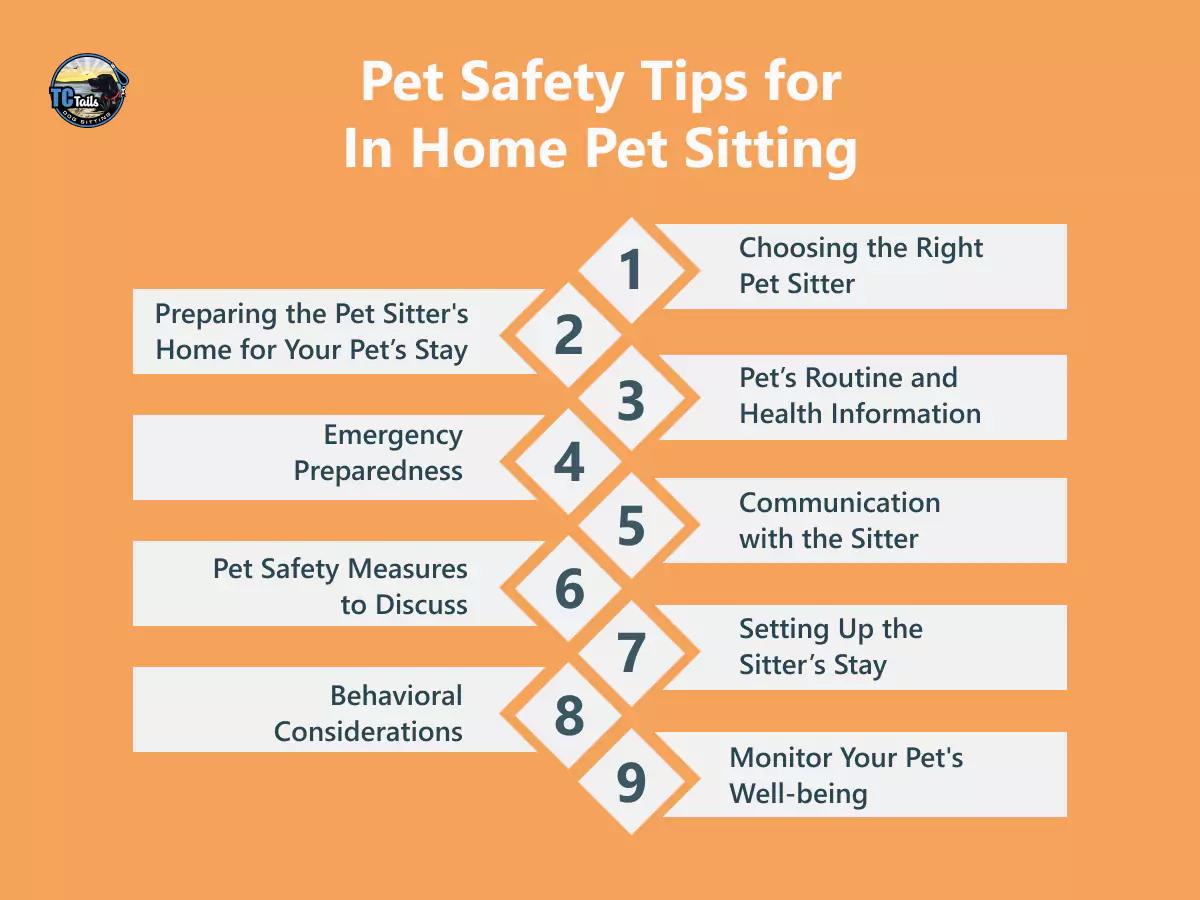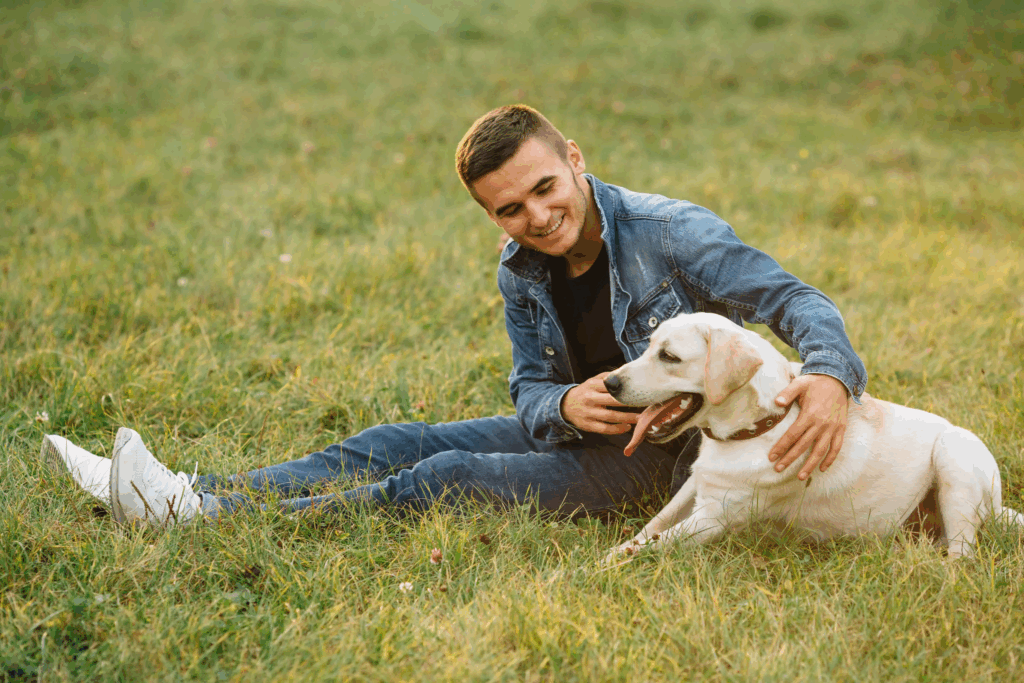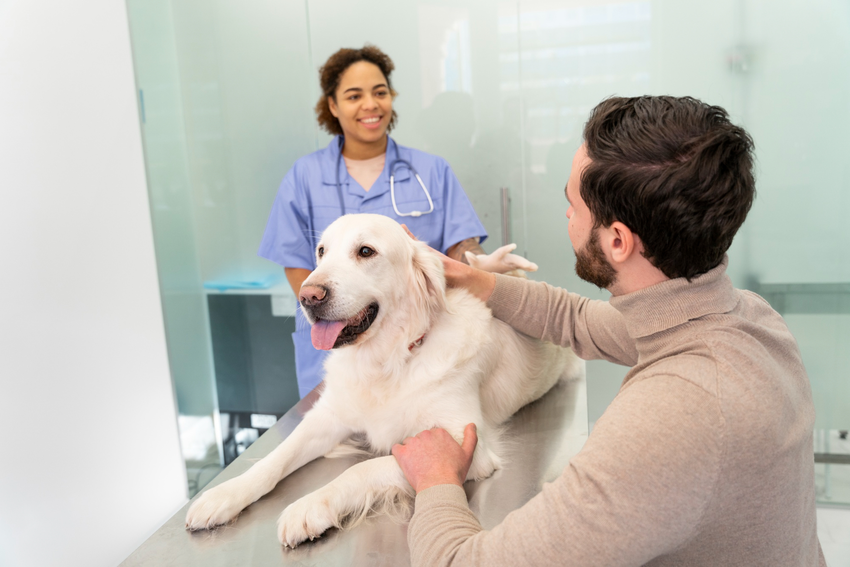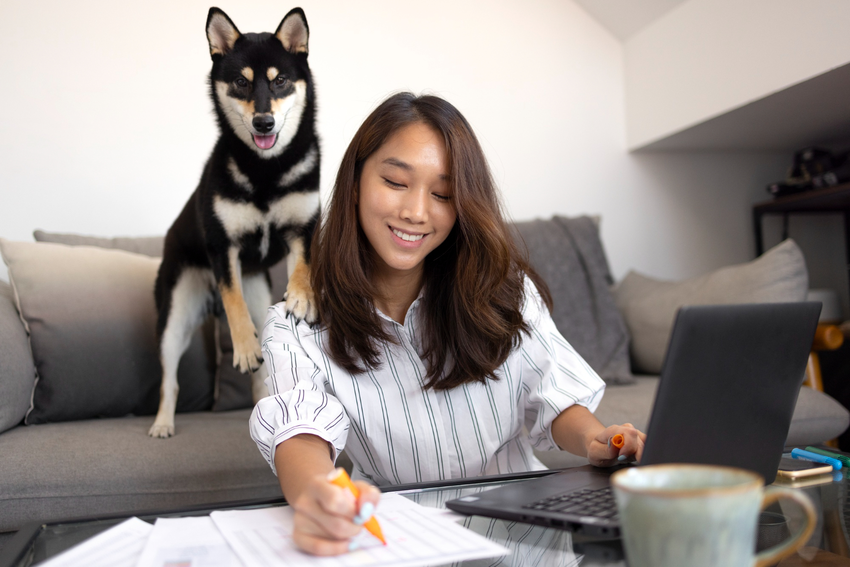The security and the comfort of your pet is your priority when you are far away from home. Pets experience less stress with their owners not around when they are in familiar surroundings, making in-home pet sitting a viable option.
Nevertheless, ensuring that your pet sitter is cautious is necessary for your pet’s health and safety.
This guide offers suggestions on how to keep your pet well during an in-home sitting experience, for example how to choose a suitable sitter and how to talk to him or her during the stay.
Read More About Creating a Comfortable Environment for Your Pet During In-Home Sitting
Picking the Right Pet Sitter
Identifying the right pet sitter can be a difficult task. Wherever you are, a good pet sitter is invaluable. For instance, you need to put trust in the person with your pet! Here’s a few pointers which I think would be helpful.
- Experience: Choose a sitter that has existing work with animals of the same species as your pet (dog, cat, etc.). This is important since they need to get along and the sitter needs to be friendly.
- Background Check: If possible, ask for a background check. This is particularly important if the sitter is a stranger to you as you may want to be careful of who you let sit your pet.
- References: Always ask, and examine, references that are offered by the client. For instance, a professional sitter should always have contacts to clients which they have previously looked after.
- Certifications: Additional qualifications may include specialized first aid training for pets. Experienced sitters will usually receive such above training.
- Personality Match: Setting the character of the sitter with that of your pet is crucial. If your pet has a shyer than average personality, then you should be looking for a gentle and understanding sitter.
- Trial Run: Observe a brief premature visit with the sitter before the sitting period so that you can see how mutual interaction occurs and what the comfort level is between your pet and the sitter.
- Clear Communication: Make sure the caregiver is accessible during the agreed time, and does not hesitate to reach out whenever necessary, particularly during urgent situations.
Have questions or need more information? Contact us now to discuss how our pet sitting services can cater to your furry friend’s needs! |
How To Prepare A Pet Sitter’s Home For Your Pet’s Stay
In order to take your pet over to a sitter’s home, it is important to do some preplanning so that your pet feels comfortable and safe when they are with the sitter. Below is a brief guide on what to have in mind:
- Remove All Items That Could Bring Harm: It is important to instruct the pet sitter to hide things like medicines, scissors, cords, and cleaning materials as they can lead to dangerous situations. This is especially needed for pets that are playful and investigable.
- Pet Proofing The Sitter’s Environment:Always make sure that the sitter’s home is safe for the animal. For example, sensitive items should be stored away, windows and balconies should be child proof, and regions which can put the animal in danger should be kept closed.
- Pet Safety fences: In case your dog is particular about places they should not go, you can tell the sitter to use pet gates. These safety fences help keep pets off of beds or other dangerous areas.
- Supplies in case of an emergency: Always ensure that the pet sitter is kept within reach of a first aid kit, plasters, or sanitizer. It is equally important to keep some of your pet’s must haves near the pet such as harnesses and leashes.
- Suitable for Pets and Tidy: Make sure to tell the caretaker that there are no risks in cleanliness such as animal hair or food bitsounths that can do harm. A clean setting is important for the owner pet and also the permant pet sitter too.
- Sitting: Let the caregiver place the blanket, toy, or even the pet’s bed into a known area so they can be more comtortable and feel secure during the transition.
Following these measures will make it so that the pet is resting with minimum discomfort while at the caretaker’s house.
Pet’s Daily Activities And Their State Of Health
It is important to note that the more detailed the information is the better the care your pet will be provided with. Include in detail:
- Feeding Schedule: Specify the different types of food needed by your pet, as well as the size of the portions and the times they need to be fed.
- Medication Details: For medicated pets, instructions concerning medicines should be in writing and dosages, timings and administration specifications should be provided.
- Medical History: Be ready to share any relevant medical information like treatments, conditions or surgeries your pet has recently undergone and may need additional care during the sitting period.
- Behavioral Quirks: The sitter should be sensitive to these behaviors and be able to manage them, for instance; anxiety and barking at strangers.
- Rest Time: In case your pet has a specific sleeping schedule, routine habits or other rest related characteristics, tell the sitter in order to help him create a more peaceable environment for your pet.
Read More About Why Pet Sitting Services Are Essential for Your Furry Friends
Emergency Preparedness for Your Pet Sitter
A pet emergency can happen at any time so preparation is a key part for you and your pet sitter:
- Emergency Contact: Provide a list with contacts of your pet sitter’s vet, nearby clinics, and trusted neighbors that can help if a situation arises.
- Medical Consent: In case your pet needs medical treatment while you are away, prepare a consen form which will allow your pet sitter to prefer to take your pet for treatment.
- Signs of Distress: If your pet exhibits signs of distress such as unusual behavior, loss of appetite, or lethargy, your sitter should be informed about such behavior beforehand.
- Handling Emergencies: Discuss the process for handling injuries, vomiting, poisoning, or other forms of emergencies. Pet sitters need to be informed when to call for help.
- Knowledge of First Aid: It is advisable to provide the pet sitter with some basic first aid training which includes how to handle cuts or other injuries.
- Order of Actions If Pet Is Lost: Set a clear outline of actions which need to be performed in case of a lost pet such as checking the area, local shelters, and posting on social media.
Communication with the Sitter
Communication with the sitter is a pivotal undertaking before, during and after pet care service. One needs to pay attention to the following:
Determine and communicate the frequency of contact you would wish to receive. If it is, for example, having text messages, photographs, or videos for every day that passes, communicating and updating you does provide some peace of mind.
Define needing contact in an milieu regarded as an emergency or a situation with involuntary dire consequences. This would involve defining a hierarchy such as using the email first then phone, followed by any or all messengers.
Engage the sitter in such a way that they will provide any extraordinary actions or behavioral patterns. This is conducive to tracking wellbeing as well as matters that require intervention on your pet.
With the possibility for deviation in behavior, the sitter should also be made aware of other alternatives like modes of play, and methods of calming the pet.
Discussion of Safety Precautions for Pets
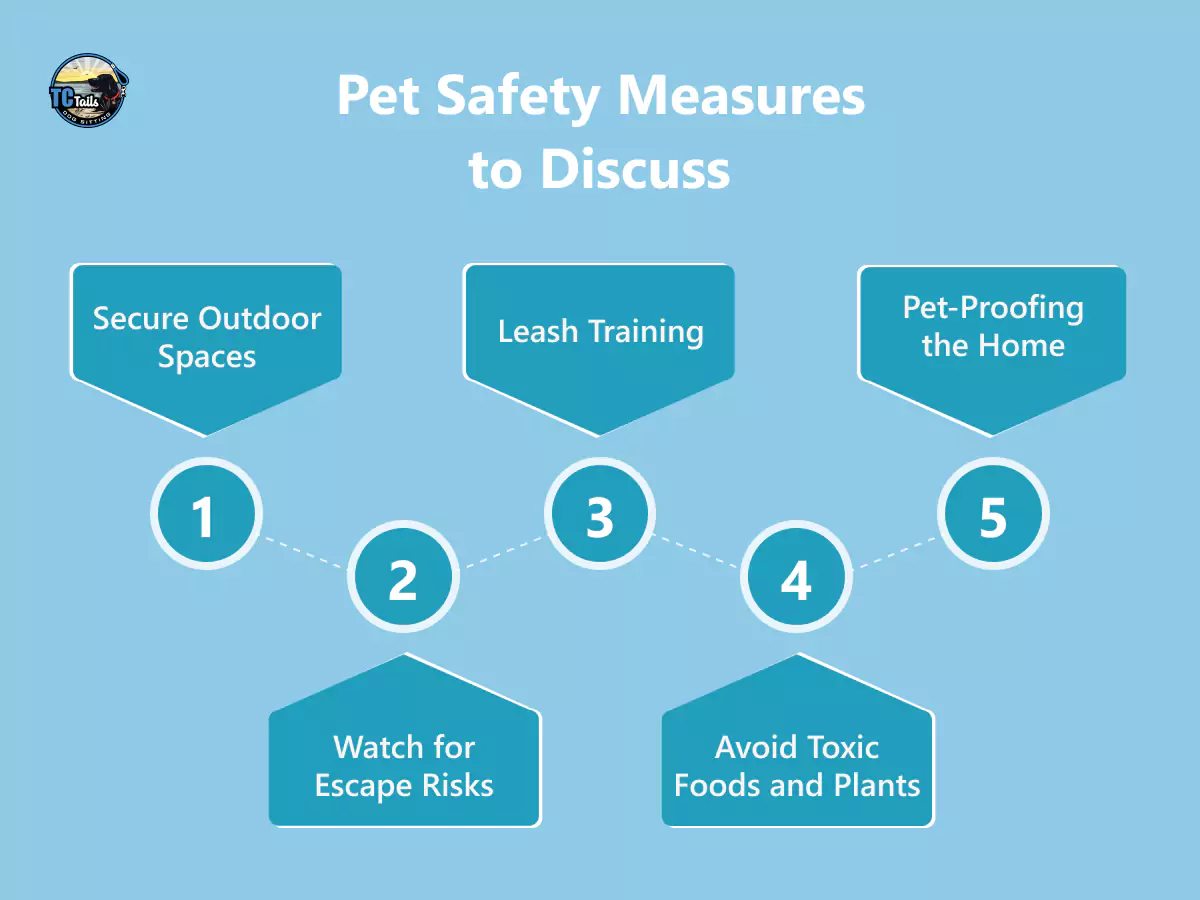
Having precautionary measures in place is a necessity if you want to keep your pet safe while they’re with a sitter.
- Restrict Outdoor Areas: If your pet loves being outdoors, check that the yard or garden is completely surrounded by a fencing wall with a secured gate. Always monitor their outdoor activities.
- Don’t Forget Poisonous Food and Plants: Teach the sitter about certain food and plants that pets can’t have like chocolate, grapes, lilies, and certain houseplants. These need to be kept out of accesible locations.
- Pet-Proofing the Residence: Make sure that certain dangerous areas, such as the stairs or kitchen, is off-limits to pets unless there is supervision. Where necessary use baby gates or other blockades.
- Reservoirs of Escape: Ensure that all windows, doors and pet carriers are securely locked to prevent escapes. This is especially relevant if your pet is one who enjoys bolting from places.
- Trainings In Leash: Ensure the sitter is comfortable with using a leash if your pet is going outside and knows how to properly secure it to avoid discomfort.
Ensure your dog’s comfort and happiness while you’re away! Book a stay with TC Tails’ professional pet sitters today! |
Final Thoughts
Although one can opt for in-home sitting for their pet’s convenience, it is essential to preplan properly for an overall positive experience. When you adhere to these tips, you can guarantee that your pet is well safeguarded in your absence.
Your pet will be more relaxed, and you will be at ease by being in touch with your sitter to ensure your home is ready and pet friendly. For high-end professional pet boarding services, please get in touch with TC Tails and rest assured that your pet will be catered to with the utmost respect and care in your absence.
FAQs
How can I make sure my pet is engaged and active when I am not around?
To keep your pet engaged and active, it is advisable to leave the sitter a range of toys, puzzles, and other activities to keep them busy. If they’re high energy, make sure to discuss an adequate exercise plan with the sitter such as walks or more active play time. If possible, provide them with toys that are interactive so your pet can be engaged in more mentally stimulating activities.
What do I do if my pet sitter faces an issue of concern or an emergency during the stay?
If there’s a problem or emergency with the sitter, ensure that they have access to a contact list with people who can assist, including the vet, an emergency animal hospital nearby, and yourself. It’s a good idea to also outline what could be done, like where to take your pet during a medical emergency or any behavioral problem that may need intervention.
Can my pet sitter travel with my pet if the case arises?
Before your pet sitter takes your pet out for a walk or to the vet, make sure to ask them first. Discuss whether your pet sitter has a vehicle that is well suited for transporting your pet and whether they’re willing to travel with your pet. Some pet sitters might be willing to travel to care for your pet while others might prefer for you to have a more hands off experience.
What if I only need my pet sitter for a couple of hours? Do they have to stay overnight?
Some pet sitters can drop in for a few hours or even stay overnight which makes them very flexible. Let your sitter know how much time you expect them to spend with your pet. Some pets, depending on their individual needs, do better with several visits during the day instead of one overnight visit.

